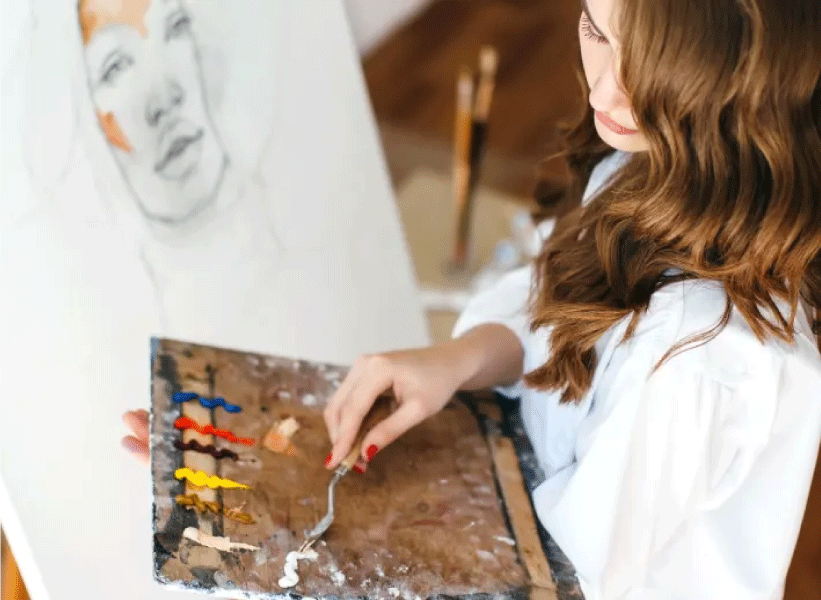Introduction
Welcome to the world of digital painting, where technology and art merge to create stunning masterpieces. Whether you’re a traditional artist looking to explore new horizons or a complete beginner intrigued by the endless possibilities of digital art, this beginner’s guide will take you on a journey to discover the joys of digital painting. From understanding the tools and techniques to finding inspiration and creating your first digital masterpiece, this guide will equip you with the essential knowledge to embark on your digital painting adventure.
Getting Started with Digital Painting
Embracing the Digital Canvas
Digital painting, as the name suggests, involves creating artwork using digital tools and techniques. Instead of traditional mediums like canvas, paints, and brushes, you will use a digital canvas, a drawing tablet, and specialized software to bring your imagination to life.
Transition: Before we jump into the technicalities, getting familiar with the hardware and software required for digital painting is essential.
To get started, you will need a drawing tablet, which is a device that allows you to draw directly on a surface with a stylus or pen. Popular drawing tablets include Wacom Intuos, Huion Kamvas, and iPad Pro with Apple Pencil.
Some popular digital painting software options include Adobe Photoshop, Corel Painter, and Procreate. These programs offer various tools and features to enhance your digital painting experience.
Exploring Digital Painting Tools and Techniques
Mastering the Digital Brush
The digital brush is the primary tool in your digital painting arsenal. It mimics traditional brushes and allows you to apply colours and create various textures on your digital canvas. Experiment with different brush types, sizes, and opacity levels to find the perfect brush for your style.
Think of layers as transparent sheets stacked on top of each other. Each layer can contain different parts of your artwork; you can edit and rearrange them without affecting the rest of your painting. This flexibility gives you more control and makes making changes along the way easier.
Experiment with different blending modes and opacity levels to achieve smooth transitions between colours. Use various brushes and techniques to create realistic lighting and shadows, adding depth and dimension to your digital paintings.
Finding Inspiration and Developing Your Style
Nurturing Your Creative Spark
Begin by exploring different artists’ work, both traditional and digital, and take note of techniques, colour palettes, and compositions that catch your eye. Use these as starting points to develop your style and artistic voice.
Take a walk in nature, observe the play of light and shadows, and capture those moments through sketches or photographs. Translate these observations into your digital paintings, adding your unique twist and perspective.
Engaging with fellow artists, sharing your work, and receiving constructive feedback can be invaluable in your artistic journey. Embrace the supportive nature of these communities, and you’ll find inspiration and encouragement to push your creative boundaries.
Step-by-Step Guide to Creating Your First Digital Masterpiece
Bringing Your Imagination to Life
Showcasing and Sharing Your Digital Art
Sharing Your Creativity with the World
Start by creating an online portfolio or gallery to showcase your digital art. Platforms like Behance, DeviantArt, and ArtStation provide a platform to share your work, connect with other artists, and receive feedback from a wider audience.
Create dedicated art accounts on Instagram, Twitter, or TikTok to share your artwork regularly. Engage with your followers, join art challenges, and collaborate with other artists to expand your reach and build a supportive network.
Continuously Learning and Growing as a Digital
- Practice regularly: Dedicate time to practice and experiment with different techniques and styles.
- Learn from tutorials: Online tutorials, video courses, and books can provide valuable insights and help you learn new techniques.
- Attend workshops and webinars: Participate in workshops and webinars conducted by experienced digital artists to gain further knowledge and inspiration.
Conclusion
Digital painting opens up endless possibilities for artists of all skill levels. You can unleash your creativity and create breathtaking artwork on a digital canvas with the right tools, techniques, and inspiration. Remember, the key is to experiment, practice, and never stop learning. So, grab your stylus, fire up your favourite software, and let your imagination soar in the digital realm. Happy painting!


